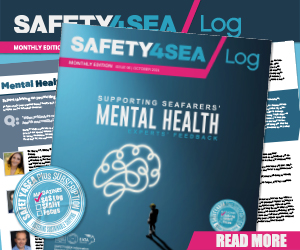The recent organic chloride incident in Singapore, where the contamination of marine fuel oil made the fuel unacceptable for use, is a cause for concern to ship operators, says Lloyd’s Register.
Several cases of organic chloride contamination have been reported by ships bunkering High Sulphur Fuel Oil (HSFO) from Singapore in February. They have led to various operational problems onboard such as sludging at purifiers, blocked filters, corrosive wear of fuel pumps and injectors and other damage to fuel oil system components.
[smlsubform prepend=”GET THE SAFETY4SEA IN YOUR INBOX!” showname=false emailtxt=”” emailholder=”Enter your email address” showsubmit=true submittxt=”Submit” jsthanks=false thankyou=”Thank you for subscribing to our mailing list”]
According to LR, marine fuels are bought and sold mostly under the international fuel standard ISO 8217. This sets a number of descriptive parameters, such as maximum limits on viscosity, density, water and catalytic fines content, “but doesn’t include descriptions of all the possible impurities or contamination that might cause an adverse reaction to the ship’s machinery plant and thus should not be in the fuel,” Naeem Javaid, Global Operations Manager – Fuel Oil Bunker Advisory Services (FOBAS), Maritime Performance Services, LR, explains.
These are covered under Clause 5 of ISO 8217, which goes on to say that “fuel should be free from any material that renders the fuel unacceptable for use and… If damage has shown to be the case, then the fuel has failed to meet the ISO 8217 in its entirety.”
What is LR doing about the problem?
On the face of it, recent contaminated fuels comply with the initial suite of ISO 8217 table 1 or 2 tests prescriptive limits. However, based on the operational feedback from ships, the fuel would seem not to have met the ISO 8217 requirements in their entirety under Clause 5.
What we’ve done at FOBAS is to adopt more detailed testing using GC/MS (Gas Chromatography/Mass Spectrometry) analysis to identify different types of organic chlorides present. Ships can then be alerted not to use these fuels
Secondly, using initial prescriptive analysis, LR has identified some properties that are specific to these contaminated bunkers, based on which LR identified vessels bunkered with the same fuel, and has alerted them not to use same fuels.
Thirdly, LR is working with industry stakeholders, such as ISO and CIMAC, to accelerate the process of getting these specific organic chlorides included into the more-detailed standardised test of ASTM D7845, so they are universally accepted to make tests and results acceptable for all parties.
We’ve also raised awareness among clients about the legal and contractual obligations that work in their favour – such as ISO 8217 Clause 5, Revised MARPOL Annex VI Regulation 18.3 – which gives suitable protection to the end users against the presence of these contaminations in fuel
Finally, LR is liaising with fuel suppliers and port states, and is participating in industry forums to stress the need to have a robust bunker quality management system throughout the marine fuels value chain.
Robust control on the bunker quality and acceptable criteria for blend components will help increase user confidence and payback to the fuel supply business in the long run
Mr. Javaid concludes.

































































